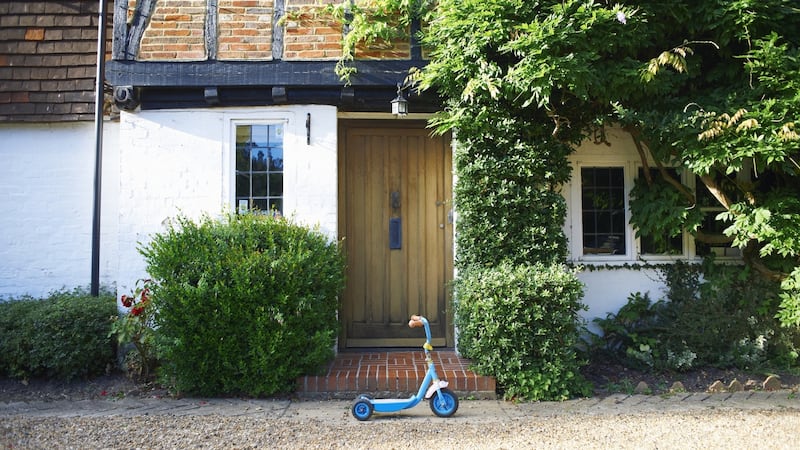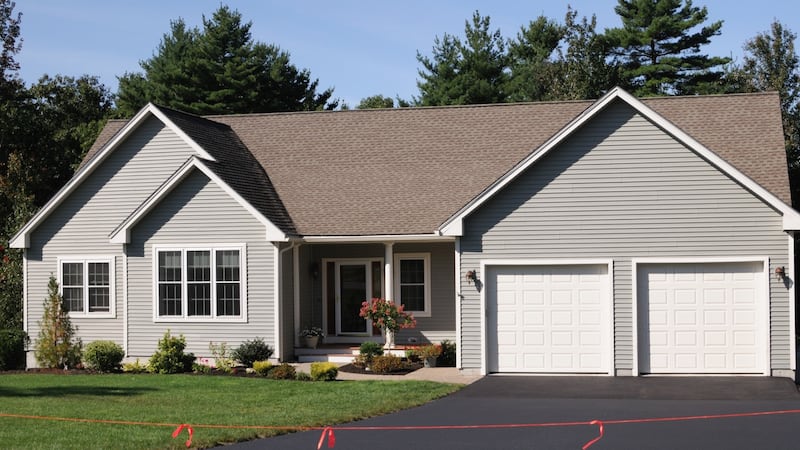Whether it’s a tree-lined gravel avenue, a stylish paved courtyard or a functional tarmacadam entrance, choosing the right driveway for your home can be tricky.
Price will obviously be a big factor, but so too is quality, maintenance, aesthetics and even how it will affect the local environment.
Tarmac is often the cheapest option and is also the most functional, but it can be problematic as, without proper drainage, surface water can build up and cause problems.
Gravel on the other hand, offers good drainage, is environmentally sound and is good value for money – but it does shift and change over time and will need topping up in order to keep it looking pristine. It’s also rough for that dash to the bins in your stockinged feet.
And while paving stones are the most expensive choice they do withstand the test of time and traffic and will give a very finished and personalised look to the outside of a property.

Indeed Patrick Leahy of Pristine Driveways in Cork says while paving is undoubtedly costly, it is definitely the most fashionable option for "house-proud" homeowners.
“I’ve been in this business for 20 years and brick driveways are by far the most popular,” he says. “During the boom we couldn’t keep up with demand and although it lessened for a while during the recession, the demand is there once again because although it is more expensive, paving offers a far superior finish, the craftsmanship is apparent and it looks a lot better than a big black square of tarmac.
“Anyone who likes attention to detail always seems to go for a paved driveway because while gravel looks good too, it won’t stay like that unless you don’t ever walk or drive on it. So as long as you power wash it every 12 months and put down some more sand between the bricks, paving always looks good and stays that way for a long time.”
Rural Ireland
But John McCarthy, landscape gardener from Ennis, Co Clare says tarmac seems to be the driveway surface of choice in rural Ireland as it is offers the best value for money and doesn't require much maintenance.
“From my experience tarmac seems to the most popular choice for customers as it is roughly the same cost as gravel but is a lot easier to maintain,” he says.
“However, it does tend to add a ‘harder’ look to a site and the range of colours is confined to black or black. Also it does require some maintenance and moss will grow on it, especially in areas where it stays damp for longer.”

Jim Maloney of Select Paving in Dublin agrees but says on the whole, tarmacadam is the easiest to maintain.
“No matter what surface you choose you are going to have weeds and moss growing over time,” he says. “There is no option that allows you to just forget it about it forever, but as long as you spray with weed killer once or twice a year, tarmacadam shouldn’t cause you any more trouble.”
Both Maloney and McCarthy agree that gravel is usually cheaper than tarmac but takes a little more effort to maintain.
“Gravel can give a ‘softer’ look to a site but appearance is always subjective and there are so many types and colours of gravel available these days that it really depends on which one is chosen and how well it is maintained,” says McCarthy. “It is not necessarily better for drainage because all driveways require a compacted sub-base and all require that drainage be planned and included in the design – but it does blend in better with a rural environment.
“The downside is that it moves so will have to raked or topped up and the amount of movement will depend on the volume and weight of traffic it gets. It can also be a medium for weeds to grow and this will add to the maintenance issue.”
Maloney agrees and says weeds will grow out of every type of surface: “Gravel is always loose so will have to be raked regularly to keep it looking smart,” he says. “And like tarmac, weeds are always going to need taking care of. But they will also grow out of paving, particularly if it has open joints and will even find a way to grow on concrete.”
Style and setting
Aside from cost and maintenance, making the right choice for your home is also dependent on the style of your property, the setting and the individual product.
“There is no one driveway that is going to suit everyone,” says Maloney. “It all depends on personal choice and which colour or surface people prefer. There are so many different types of paving available and there is also a new option called Clima-Pave which is permeable and allows water to seep through so this is better for the eco-system.”
In fact, Darren Topps, head gardener at Lismore Castle in Waterford, who has experience of all types of driveway surfaces, says it is important to consider how products blend in with the environment.
“There can environmental issues arising from both tarmac and paving and by this I mean using materials which come from industries that have a detrimental effect on the environment,” he says. “This would include bitumen and tar from petrochemical industries, natural stone from quarries, aggregates dredged from natural environments and concrete materials for precast slabs from the cement industry.
“These can result in contaminated run off in to natural water systems, the removal of carbon sinks to create parking areas and the destruction of soil ecosystems and also the removal of a species habitat just to create somewhere to park a car.”
As well as environmental considerations, price is also a determining factor and Jim Maloney says an average driveway for a three-bedroom semi will cost between €3,000-€4,000 and should only take a couple of days to complete.
However, John McCarthy in Clare says the cost of any type of surface will vary depending on how much work needs to be done beforehand.
“Ground preparation will require the installation of a compacted sub-base and may also require the installation of a drainage system,” he says. “This part of the work will vary hugely from site to site. Prices will also depend on the scope of the work with larger areas benefitting from economy of scale.
“But assuming this sub-base is already in place then the price per square metre will be around €5-€15 for gravel, €15 for tarmac and €40+ for paving.”
Expert gardener and landscaper, Darren Topps offers his pros and cons to the three most common driveway surfaces:
Gravel:
• The pros are that it is cheap, easy to lay, offers good drainage, there is a good choice of material available and it blends well with the environment.
• Cons include the fact that it is susceptible to weeds, it moves when driven on, will need topping up, can sink and create puddles and cats may use it as a litter tray.
Paving:
• The positive side of paving is that it can look good, shouldn’t move if laid correctly, it has good longevity, there is a choice of material and maintenance is low due to fewer weeds.
• On the negative side, it is harder to lay, is more expensive, there is more groundwork needed, there can be a run off and environmental issues.
Tarmac:
• This surface can tolerate traffic well, is relatively low cost to lay and maintain and there are fewer weeds.
• Cons include the fact that there is always a run-off and no drainage, it looks un-natural and it poses environmental issues.
ennislandscaping.com
pristinedriveways.ie
selectpaving.ie











